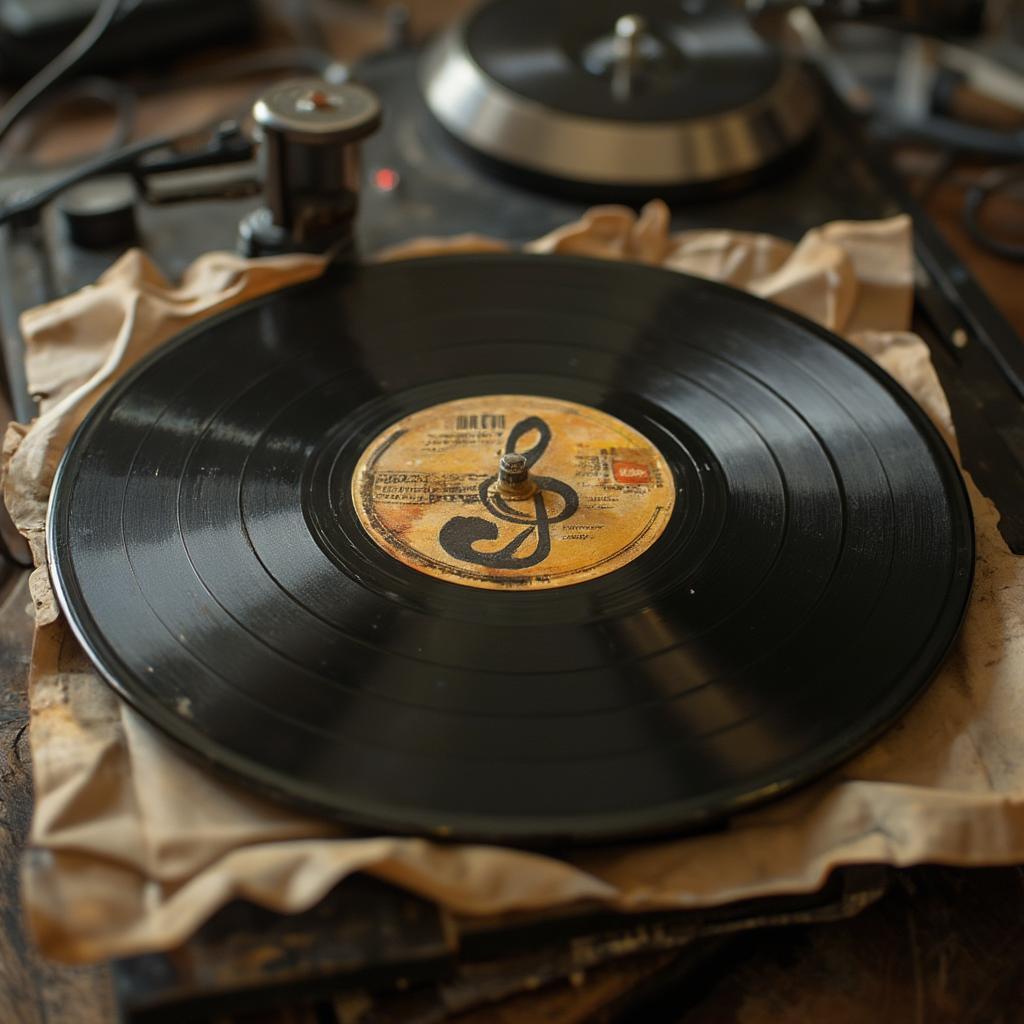The Classic Rhythm and Blues Collection: A Journey Through Soulful Sounds

The Classic Rhythm And Blues Collection is more than just a compilation of songs; it’s a time capsule holding the raw emotion, vibrant energy, and historical significance of a genre that shaped modern music. From its humble beginnings in the 1940s to its evolution into soul, funk, and beyond, rhythm and blues has left an indelible mark on the musical landscape. We, at Shock Naue, understand the importance of preserving and celebrating this rich heritage, and this article will be your guide through the essential elements of this genre.
Rhythm and blues wasn’t just a sound; it was a movement. Born from the blues, jazz, and gospel traditions, it spoke to the everyday experiences of a community finding its voice. The driving rhythms, soulful vocals, and heartfelt lyrics created a sound that was both cathartic and celebratory. It captured the struggles, joys, and aspirations of a generation, and its influence can still be felt in today’s music. To understand the full scope of this powerful genre, we must delve into its history and explore the artists who defined it.
What Makes a Song a Classic Rhythm and Blues Anthem?
The distinction between good and great lies in the emotional impact and timelessness. A true classic rhythm and blues track does more than just play; it resonates with the listener on a deep, personal level. But what are those key elements? It’s a blend of several factors, beginning with the infectious rhythms that make you want to move. These rhythms often feature a strong backbeat, powered by drums and bass that create a solid foundation for the melody.
Then there are the vocals – passionate, raw, and often delivered with a gospel-tinged fervor. The vocalists of classic R&B weren’t just singing notes; they were telling stories, pouring their hearts into every word. Lyrics explore themes of love, loss, struggle, and hope, connecting with the listener’s own experiences. Finally, the arrangements often feature prominent horns, bluesy guitars, and a rich, warm sonic palette that gives these tracks their distinctive character. It’s the sum of all these elements that create a classic, one that stands the test of time.
The Evolution of Rhythm and Blues: From 1940s to the Golden Age
The 1940s witnessed the birth of rhythm and blues, a distinct genre that emerged from the blues, gospel, and swing jazz traditions. Initially, it was a term used to categorize music by African American artists, evolving from what was then termed “race music.” Early rhythm and blues was characterized by boogie-woogie piano, jump blues influences, and the raw, powerful voices of artists like Louis Jordan and Wynonie Harris. These musicians laid the groundwork, showcasing the energy and attitude that would define the genre. You can delve deeper into the exciting era of 1940s rhythm and blues to grasp the roots of this music.
As the 1950s rolled around, rhythm and blues exploded in popularity, crossing over to mainstream audiences. This era saw the rise of legendary artists like Chuck Berry, Little Richard, and Fats Domino, who combined the raw energy of early R&B with catchy melodies and infectious rhythms. This was a pivotal moment where rhythm and blues gained mainstream appeal and laid the foundation for rock and roll, showcasing the music’s diverse potential. It was a time of experimentation and innovation, as artists pushed the boundaries of the genre, paving the way for future generations.
“The 1950s was a pivotal period for R&B. It wasn’t just about the music; it was about breaking down barriers and creating something new,” recalls Dr. Eleanor Vance, a music historian specializing in early rhythm and blues. This period cemented the legacy of best rhythm and blues albums that continues to influence artists today.
Defining the Core Sound: Instruments and Influences
The instrumentation in classic rhythm and blues is distinct and contributed greatly to its unique sound. The foundation usually consists of a strong rhythm section, with a driving drum beat, a walking bass line, and percussive piano. Guitars, often with a bluesy tone, provided melody and counterpoint. Crucially, the saxophone, and horn sections in general, were the defining element, creating those iconic, soulful sounds that defined the era. The use of call-and-response between the vocals and horns gave the music a dynamic, almost conversational quality.
The influence of gospel music was also undeniable, adding a deep emotional resonance to the vocals. The passionate delivery and soulful inflections evident in many R&B tracks can be traced back to gospel traditions. Furthermore, the rhythmic complexity of jazz played a role, particularly in the arrangements and instrumental solos, showcasing that R&B was a melting pot of different musical forms. These various influences combined to create a distinct, powerful, and moving sound.
Exploring Key Artists and Timeless Songs
No exploration of classic rhythm and blues would be complete without recognizing the iconic figures that shaped the genre. From the raw energy of Chuck Berry to the soulful smoothness of Sam Cooke, each artist brought their unique talents to the mix. You could experience a glimpse of the greatest rhythm and blues songs and you would be captivated by the variety and depth of the genre. Think of the powerful vocals of Etta James, the charismatic stage presence of James Brown, and the pioneering guitar work of Sister Rosetta Tharpe – these artists are cornerstones of the genre.
Their music didn’t just entertain, it spoke to the realities of their lives and the experiences of their communities. Their songs became anthems of resilience, love, and hope. These artists weren’t just musicians; they were cultural icons whose influence continues to inspire generations. To better understand the impact, consider exploring best r&b classics, which showcase the diversity and power of R&B music.

The Lasting Impact of Classic R&B
The impact of classic rhythm and blues extends far beyond its era. It laid the foundation for so many genres that followed, including rock and roll, soul, funk, and hip hop. Many modern artists, from rock to pop and even country, continue to draw inspiration from the raw energy and emotional depth of R&B. Its influence can be heard in the rhythms, melodies, and vocal styles of countless songs.
Rhythm and blues wasn’t just music, it was a cultural force that helped break down racial barriers and gave voice to a generation. It paved the way for future generations of black artists and contributed to the ongoing evolution of popular music, and it continues to shape the sounds of the 21st century. The emotional power, the heartfelt storytelling, and the sheer energy of classic rhythm and blues, continues to resonate today. It’s more than just music; it’s a cultural legacy.
“The legacy of R&B is undeniable. It’s the DNA of modern popular music, shaping everything from rock to hip-hop,” comments Michael Davis, a respected music journalist and author. The genre has gifted the world with a treasure trove of emotional expression, demonstrating that music can transcend language and cultural boundaries.
How to Build Your Own Classic Rhythm and Blues Collection
Building a classic rhythm and blues collection is a journey of discovery, one that should be undertaken with passion and a keen ear for detail. Start by exploring some of the key artists and albums mentioned earlier, familiarizing yourself with the different sounds and styles. Don’t limit yourself to just the hits – delve deeper into each artist’s catalogue, and you’ll find hidden gems that will enrich your collection.
Another way to enhance your collection is to consider how the music was originally consumed. Listen to vinyl records, with the crackle and warmth of analog sound, to truly experience the music as it was intended. And, in order to really appreciate this music, do a little research on the historical context, learn about the stories behind the songs and the artists. The more you immerse yourself in the world of classic rhythm and blues, the more rewarding your collection will become.
Curating Your Collection: Tips for the Modern Listener
Here’s a step-by-step guide to start building your collection of classic R&B:
- Start with the Essentials: Begin with the legendary names: Chuck Berry, Etta James, Ray Charles, and Sam Cooke are essential.
- Explore Subgenres: Go beyond the mainstream and explore subgenres like Doo-Wop, jump blues, and early soul.
- Listen to Compilations: If you aren’t familiar with a lot of the artists, start with classic compilation albums from reputable record labels.
- Dig into B-Sides: Look into the B-sides of the classics; there are often hidden gems there.
- Attend Live Shows (if possible): Experience classic R&B live (if possible) to feel the energy and passion that this genre inspires.
- Read Artist Biographies: Learn about the personal and professional lives of artists to understand the stories behind the music.
- Explore Online Resources: Utilize online platforms, blogs, and forums to discover new music and share your findings.
- Connect With Other Enthusiasts: Build a community of fellow R&B lovers to exchange experiences and recommendations.

These steps will lead you to a better appreciation of the nuances of the music. Also, remember to listen with open ears and appreciate the depth and diversity within this remarkable genre. And when you feel that you are ready, venture into r&b classic soul music and see what awaits you.
In Conclusion
The classic rhythm and blues collection is more than just a collection of songs; it’s a reflection of history, a testament to creativity, and a source of lasting emotional power. It represents a vibrant musical legacy that continues to inspire and resonate with music lovers of all backgrounds. From its humble beginnings in the 1940s to its lasting influence on modern music, rhythm and blues has left an indelible mark on the world. By understanding its roots, exploring its key artists, and listening with an open heart, you can truly appreciate the beauty and power of this extraordinary genre. At Shock Naue, we’re honored to celebrate this music and share its legacy with you. So start your musical journey and discover the timeless magic of classic rhythm and blues.
Frequently Asked Questions
What are the main characteristics of classic rhythm and blues?
Classic rhythm and blues is known for its strong backbeat, soulful vocals, and gospel-influenced harmonies. It often features a prominent horn section, bluesy guitar riffs, and lyrics dealing with themes of love, loss, and daily life. The music is emotionally charged and designed to make you move.
Who are some of the most influential artists in classic rhythm and blues?
Some of the most influential artists include Chuck Berry, Etta James, Ray Charles, Sam Cooke, Little Richard, and Fats Domino. These artists not only defined the genre but also laid the groundwork for future generations of musicians. Their contributions remain pivotal in understanding the evolution of popular music.
What are the key instruments used in classic rhythm and blues?
Key instruments include drums, bass, piano, electric guitar, saxophone, and trumpet. These instruments create the distinctive sound that defines classic rhythm and blues music. They often come together in a way that is both powerful and sophisticated.
How does rhythm and blues differ from blues music?
While rhythm and blues emerged from blues, it’s distinguished by its faster tempo, stronger backbeat, and more diverse instrumentation. Blues generally has a more melancholic feel and a focus on the 12-bar structure. Rhythm and blues is more upbeat, dance-oriented, and features a blend of different musical styles.
Where did rhythm and blues music originate from?
Rhythm and blues originated in the 1940s in the United States, particularly in African American communities. It grew out of earlier genres like blues, jazz, and gospel, creating a distinctive new sound. Its evolution reflected the social and cultural changes of its time.
How has rhythm and blues influenced modern music?
Rhythm and blues has profoundly influenced many modern genres, including rock and roll, soul, funk, and hip hop. Its rhythms, melodies, and vocal styles can be heard in contemporary music. It’s essentially a foundation upon which much of today’s popular music has been built.
What’s the best way to start a collection of classic rhythm and blues?
Start by exploring the key artists and albums mentioned in this article. Listen to compilations, delve into B-sides, and explore different subgenres. Read artist biographies and use online resources to expand your knowledge and taste. A thoughtful approach to collecting will maximize your enjoyment of this genre.




